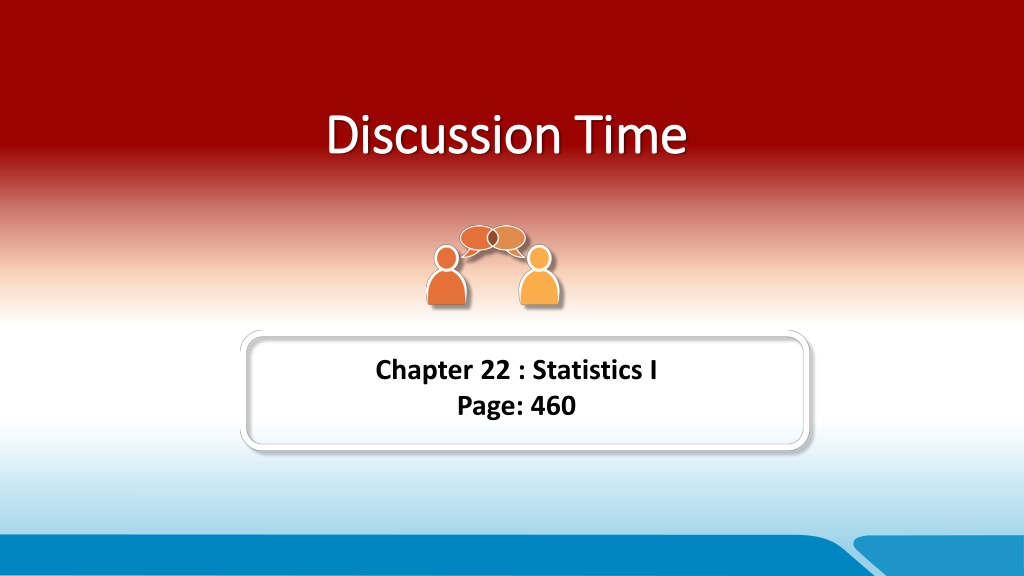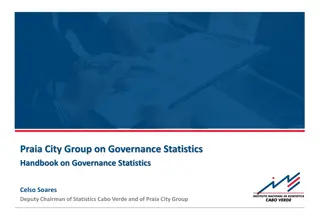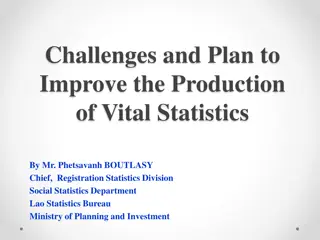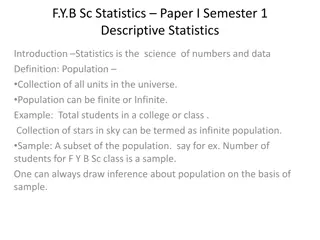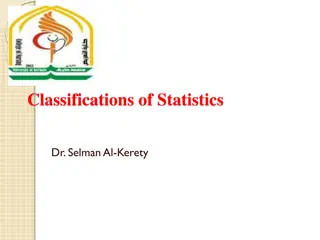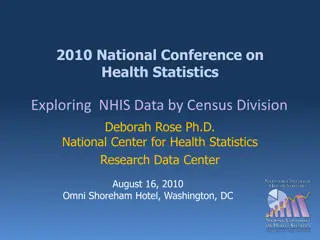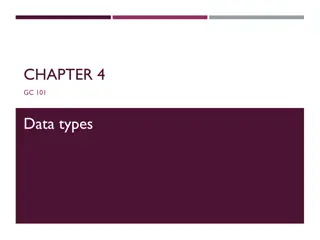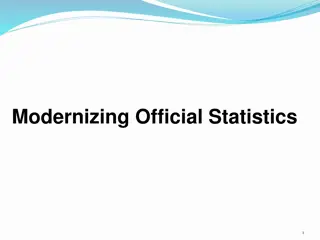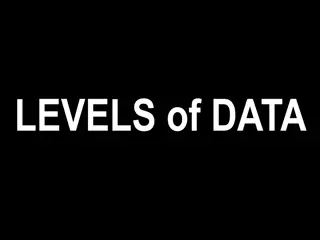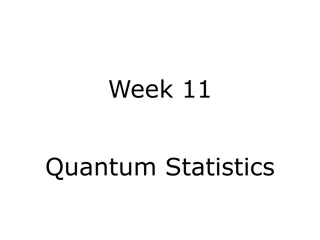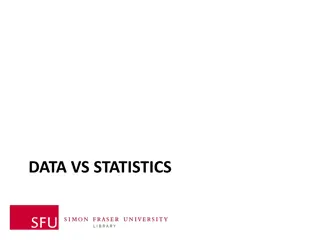Understanding Different Types of Data in Statistics
Explore various types of data in statistics including discrete, categorical, bivariate, ordinal, and continuous data. Learn how to distinguish between these data types through examples and understand how they are used for data collection and analysis in different scenarios.
Download Presentation

Please find below an Image/Link to download the presentation.
The content on the website is provided AS IS for your information and personal use only. It may not be sold, licensed, or shared on other websites without obtaining consent from the author. Download presentation by click this link. If you encounter any issues during the download, it is possible that the publisher has removed the file from their server.
E N D
Presentation Transcript
Discussion Time Discussion Time Chapter 22 : Statistics I Page: 460
Question posed: Question posed: Work with a classmate to come up with a question that could be used to gather: 1. discrete data 2. categorical data 3. bivariate data 4. ordinal data 5. continuous data 6. nominal data 2 Chapter 22: Statistics I page 460
Suggested solution: Suggested solution: Work with a classmate to come up with a question that could be used to gather: 1. discrete data Discrete data is data which can only take on certain values, in between values are not possible. Possible answers: How many text messages do you send a week? How many goals did your favourite football team score in their last match? How many students are in your maths class? How many pairs of shoes do you own? How many mobile phones do the members of your family own? 3 Chapter 22: Statistics I page 460
Suggested solution: Suggested solution: 2. categorical data Categorical data is data in the form of words. Possible answers: What is your favourite sport? Do you study French? How did you come to school today? Name 3 different makes of car? Where did you go on holiday last year? 4 Chapter 22: Statistics I page 460
Suggested solution: Suggested solution: 3. bivariate data Bivariate data looks at two variables at the same time. Possible answers: What is your height and weight? What were the maximum daily temperatures and rainfall amounts recorded in May? How long did you study for the test and what result did you get? How many students and teachers are there in your school? What speed resulted in the shortest journey time? 5 Chapter 22: Statistics I page 460
Suggested solution: Suggested solution: 4. Ordinal data Ordinal data is text data that can be categorised into groups in a particular order/rank. Possible answers: What grade did you get in your last maths test? How would you rate the latest Star Wars movie? How often are you late for school? How was our service today? How do you feel today? 6 Chapter 22: Statistics I page 460
Suggested solution: Suggested solution: 5. Continuous data Continuous data is number answers that can take on any value within a range. Possible answers: What is the weight of your school bag? What time did you wake up this morning? How far is your house from the school? What is the volume of the water in a swimming pool? What is the length of the room? 7 Chapter 22: Statistics I page 460
Suggested solution: Suggested solution: 6. Nominal data Nominal data is made-up of word responses that have no particular rank. Possible answers: What day is it? What subjects do you study? Where do you live? What is favourite chocolate bar? What music do you like best? 8 Chapter 22: Statistics I page 460
